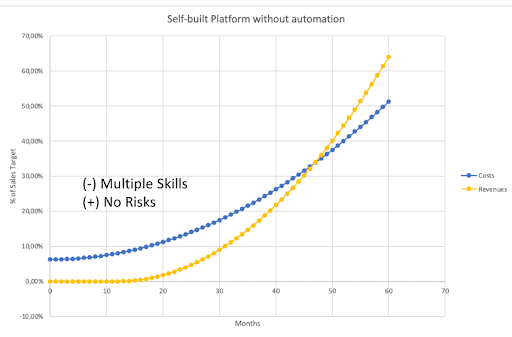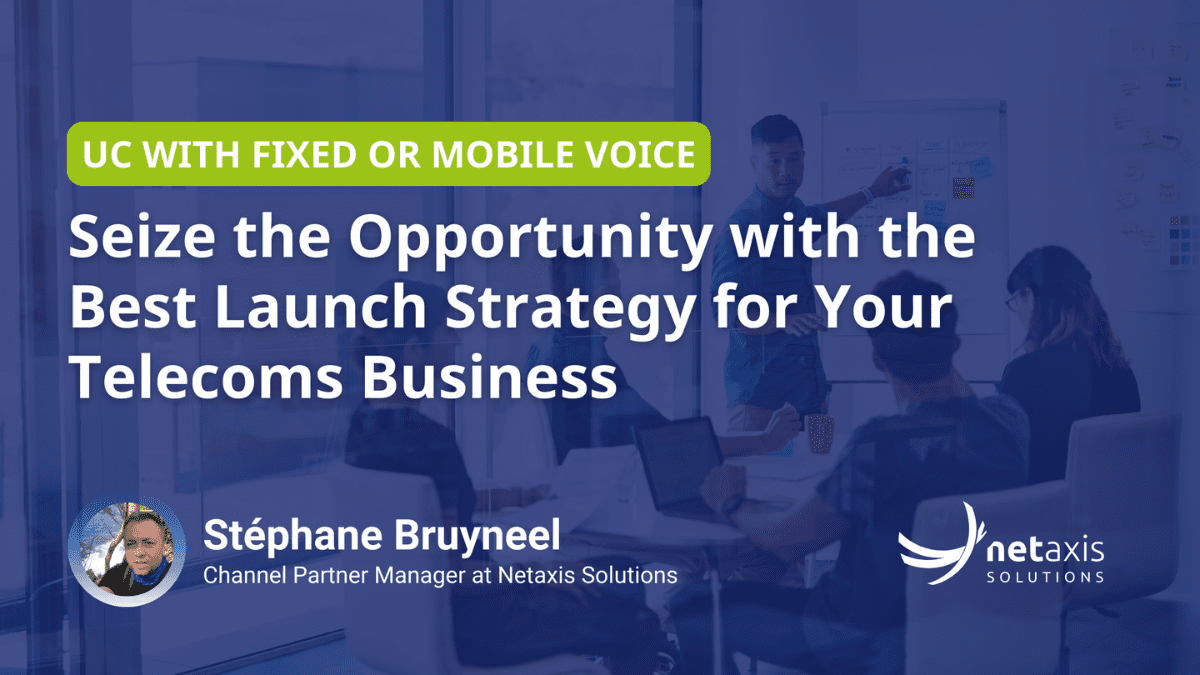Unified Communications (UC) services are becoming increasingly popular as businesses look for ways to improve collaboration and communication among their employees. As such, many service operators have launched UC services to meet the growing demand. Combining UC with fixed voice is a strong differentiator and right up the alley of the network operator.
However, there are several scenarios to consider when launching a UC service, each with its own advantages and disadvantages. In this blog post, we will compare and contrast two scenarios for launching a UC service and provide insights into the benefits and drawbacks of each.
Scenario 1: Manual Activation and Life Cycle Management of UC and voice
In the manual activation and life cycle management (LCM) scenario, a service operator launches a UC service with a fixed voice breakout to the market. The preparation from a go-to-market and operational point of view takes 12 months, and the activation of the service is done manually via an administrator at the telco on customer demand. One disadvantage of this scenario is that service activation requires technical expertise, which can be a challenge for some customers.
The big advantage here is that there is no risk involved. The break-even point of this scenario is approximately 4 years, with profit margins after 5 years being in the region of 15% according to service roll-outs seen in the market.

Advantages:
- Low risk: The manual activation scenario offers a low-risk approach to launching a UC service. Operators can test the market without making significant investments.
- Fixed voice breakout: The fixed voice breakout in the manual activation scenario can offer better quality of service and reliability.
- Low investment: This scenario requires lower investment compared to other scenarios, which can reduce the financial risk for the operator.
Disadvantages:
- Slow activation: The activation process is slow and requires manual intervention, which can lead to delays and customer dissatisfaction.
- Technical expertise required: The activation of the service requires technical expertise, which can be a challenge for some customers and lead to higher customer churn rates.
- Limited scalability: The manual activation scenario has limited scalability and may not be suitable for operators looking to grow their customer base quickly.
Scenario 2: Automated Provisioning and Life Cycle Management with a “DIY” development
In the automated provisioning scenario, an investment is made in a platform that the operator builds itself, which automates the provisioning process.
One big advantage of this scenario is faster activation, fewer errors and a better customer experience. However, it requires specialised developer skills and is riskier compared to the manual activation scenario.
The break-even point for this scenario is approximately 4 years with profit margins after 5 years likely to be around 20%. Margins in this scenario can be increased as volumes accelerate.
Our experience is that often development cycles are longer than expected and as UC platforms evolve rapidly maintenance costs are higher than expected. Launching an own developed platform requires focus as that time to market is very important in this rapidly evolving market. The UC market with voice break-out is to grow X3 in the coming 4 years to 100 Million subscribers globally by 2027.

Advantages:
- Faster activation: The automated provisioning scenario offers faster activation, which can lead to a better customer experience and reduced churn rates.
- Fewer errors: The automated provisioning scenario can reduce errors during activation, which can improve the quality of service and reduce customer complaints.
- Better customer experience: The automated provisioning scenario can offer a better customer experience by streamlining the activation & LCM process.
Disadvantages:
- Specialised developer skills required: The automated provisioning scenario requires specialised developer skills, which can be costly and difficult to find.
- Higher risk: The automated provisioning scenario involves more risk compared to the manual activation scenario due to the investment required in building the platform.
- Limited control: The operator may have limited control over the service due to the automation process, which can limit the ability to differentiate the service.
The value of a better customer experience is considerable: According to a survey conducted by Salesforce, 76% of customers expect companies to understand their needs and expectations. By automating the provisioning process, the operator can meet these expectations and deliver a more personalised experience to its customers.
However, Scenario 2 also has its drawbacks. The development of the platform requires specialised developer skills, which can be expensive and time-consuming. Moreover, there may be a learning curve for employees to adapt to the new system, which can result in temporary productivity losses. Additionally, the break-even point is still approximately 4 years, which means that the operator will have to make a significant initial investment before seeing any return.
In conclusion, both Scenario 1 and Scenario 2 have their advantages and disadvantages. Scenario 1 offers a low-risk approach to launching a new service, but it requires a longer time to activate and technical expertise. Scenario 2, on the other hand, provides a faster and more automated activation process, but it requires specialised developer skills and a significant initial investment. It is important for operators to carefully consider their goals and resources before deciding which scenario to pursue.
There is a third scenario to consider which involves working with a sourced platform such as Netaxis Fusion, this will be the topic of our next blog post. In the meantime, if you are interested in learning more about how to launch a new unified communications service, please contact us for more information. Our team of experts can help you navigate the complexities of the telecom industry and find the best solution for your business needs.





